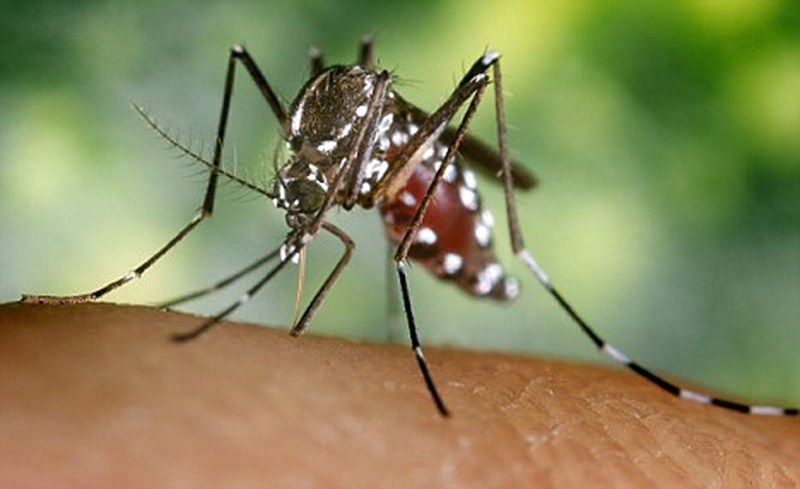Good Riddance – Natural Pond Mosquito Control
July 30th, 2009
By Greg Blackham, Aquatic Specialist
 The war between humans and mosquitoes is a timeless one. Mosquitoes have spread more diseases and death worldwide than any other cause. It is well known they can spread West Nile virus, malaria, dengue fever and many others. They also rate very high on the top ten most annoying insect’s list, completely able to ruin a nice day outside within minutes. They can breed in the smallest pockets of standing water, which brings us to our problem: your pond! With the potential to house millions of eggs, you could find yourself on the front lines of a battle with mosquito control!
The war between humans and mosquitoes is a timeless one. Mosquitoes have spread more diseases and death worldwide than any other cause. It is well known they can spread West Nile virus, malaria, dengue fever and many others. They also rate very high on the top ten most annoying insect’s list, completely able to ruin a nice day outside within minutes. They can breed in the smallest pockets of standing water, which brings us to our problem: your pond! With the potential to house millions of eggs, you could find yourself on the front lines of a battle with mosquito control!
A single female mosquito may lay anywhere from 100 to 300 eggs at a time, which occurs on average 5-7 times in her lifetime. An egg can become an adult in as early as 4 days, but the species generally found in ponds usually take longer, closer to two weeks. As an adult, they generally prey close to where they originated. They track their potential hosts by sight, scent and heat. Some are very picky eaters, possibly only targeting birds or people, while others will draw blood for egg development from anything they can find. Their entire life cycle is roughly a month, which is plenty of time to do a lot of damage.
There are many ways to drastically minimize the amount of mosquito activity on your pond. One of the easiest ways is to keep the water from remaining stagnant by adding a pond aeration system or fountain capable of disrupting the surface of the water. Another way is to add specific species of pond fish. The more fish you have in your pond can play a significant role in reducing mosquito populations. Bass, bluegill and catfish all feed on mosquito larvae. Tadpoles can reduce larvae populations also, and when they become frogs or toads they will consume large amounts of adult mosquitoes. Gambusia affinis, also known as western mosquitofish, can consume massive amounts of larvae, but should be carefully considered. They have a tendency to replace native fish populations due to their aggressive nature and ability to starve other fish during their competition for food.
Altering the environment and structure of the pond is another method to minimize mosquitoes. Vegetation and aquatic weedsgrowing in the water and along the edge can create pockets of calm and shady water even if you have a large pond fountain agitating most of the surface. Overhanging bushes and trees also support ideal shady locations, so clipping these back is a good idea. Areas that flood frequently, but take a couple weeks to dry, along with shallow water, can create a big problem also. Digging shallow areas deeper and eliminating any gradual slope on the embankment is a very good idea; not only will it cut the mosquito population down, it will also help with algae and nuisance vegetation growth as well.
Biological larvicides and other insecticides can be an excellent way to control mosquitoes. There are many formulations for a variety of scenarios, with no known risk s to the environment when applied at the proper rates. Usually this type of treatment will last around a month per application and can be used throughout the breeding season to achieve year-round mosquito control.
Using a combination of these techniques, I wish you a pleasant bite-free walk around your pond. Good Luck!
Contact the experts at 888-480-5253 for all of your lake, pond and fisheries management needs.
Greg Blackham is an Aquatic Specialist with SOLitude Lake Management. Since 1998, SOLitude Lake Management has been committed to providing full service lake and pond management services that improve water quality, preserve natural resources, and reduce our environmental footprint. Services are available throughout the Eastern United States. Fisheries management consulting and aquatic products are available nationwide. Learn more about SOLitude Lake Management and purchase products at www.solitudelakemanagement.com.










